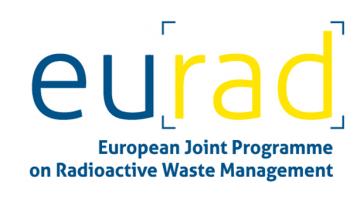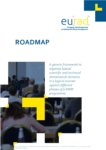DONUT: Development and improvement of numerical methods and tools for modelling coupled processes (EURAD WP)
DONUT is an RD&D Work Package (WP) within EURAD. It aims to improve understanding of the upscaling THMC modelling for coupled hydro-mechanical-chemical processes in time and space.
Overview
The DONUT WP has been selected for inclusion in the first phase of EURAD as it addresses the following activities, which are identified as having a high or medium relevance to Theme 7 “Performance assessment, safety case development and safety analyses” of the EURAD Roadmap:
- Improved understanding of the upscaling of THMC modelling for coupled hydromechanical-chemical processes in time and space (Phase 1 of the Roadmap).
- Improved understanding and models for the impact of THMC on the behaviour of the host rock and the buffer materials (Phase 2 of the Roadmap).
- Improved multi-scale reactive transport models (Phase 2 of the Roadmap)
- Improved performance assessment tools (Phases 0 and 1 of the Roadmap).
- Further refinement of methods to make sensitivity and uncertainty analyses (Phases 2 and 3 of the Roadmap)
- Improved computing (Phases 3 and 4 of the Roadmap).
Furthermore, by improving the numerical methods and tools that are able to manage multi-physicals coupled processes, the work conducted in this WP helps achieve a better description of site evolution and design optimisation, both of which can be applied to deep geological and near surface radioactive waste disposal. Finally, by providing efficient numerical means for analysis, DONUT will contribute to abstraction of the safety case (quantification of safety margins, detailed assessment of safety functions allocated to components, etc.).
Objective
This WP will develop and improve specific numerical methods and tools that allow efficient modelling coupled processes, considering (i) the versatility of numerical methods with regards to the various tools used by “end-users”; and (ii) a demonstration of robustness and added-value of developments compared to the benchmark of the methods and tools employed in representative test cases conducted at the repository-scale (in space and time).




